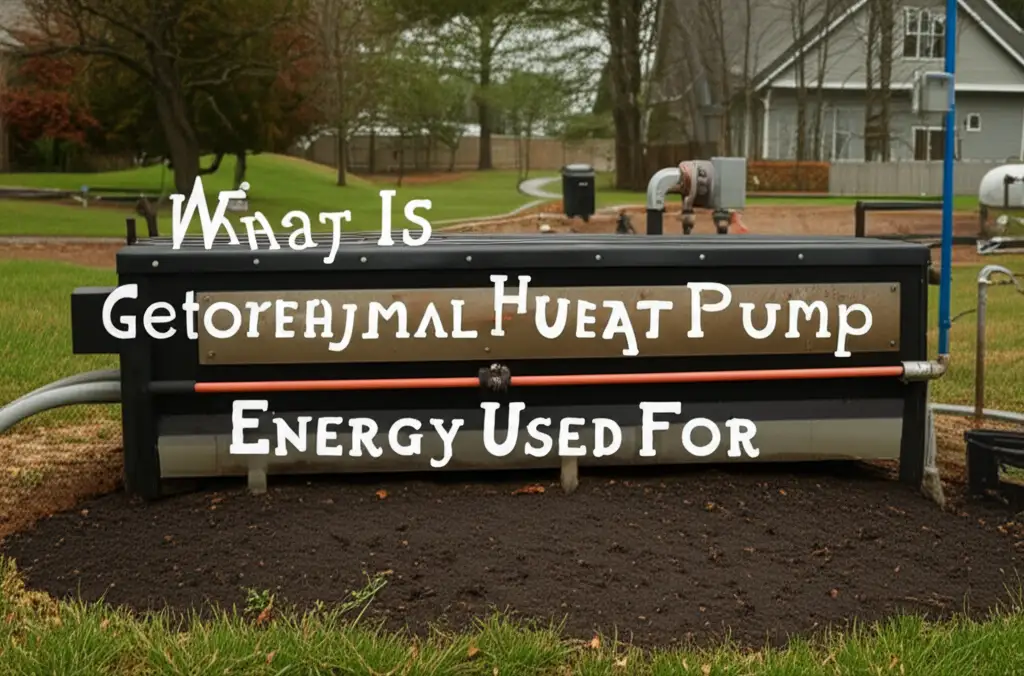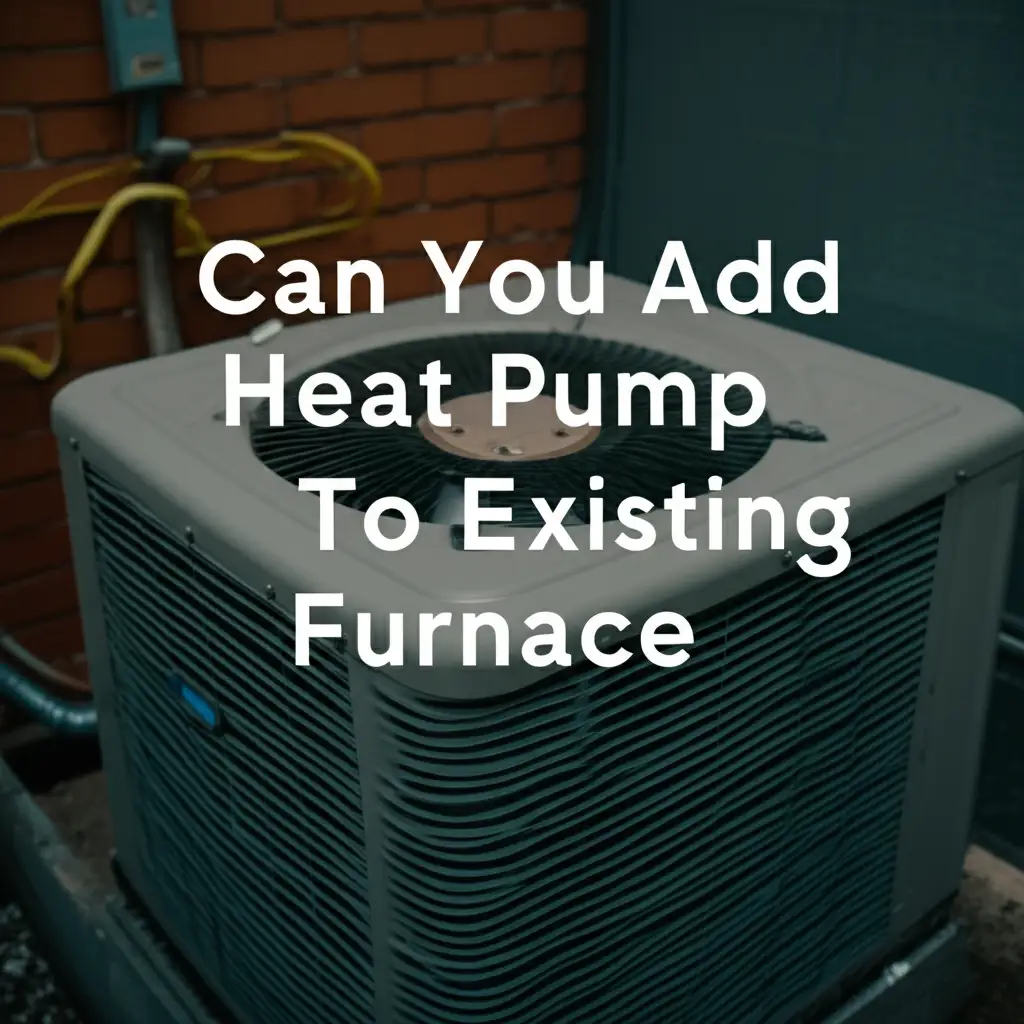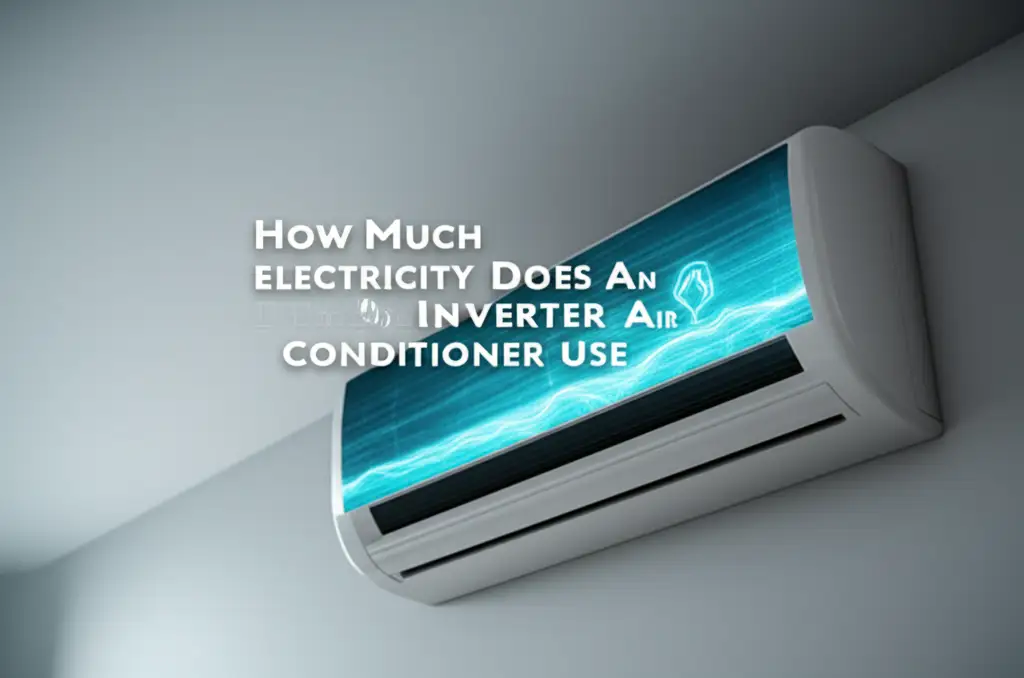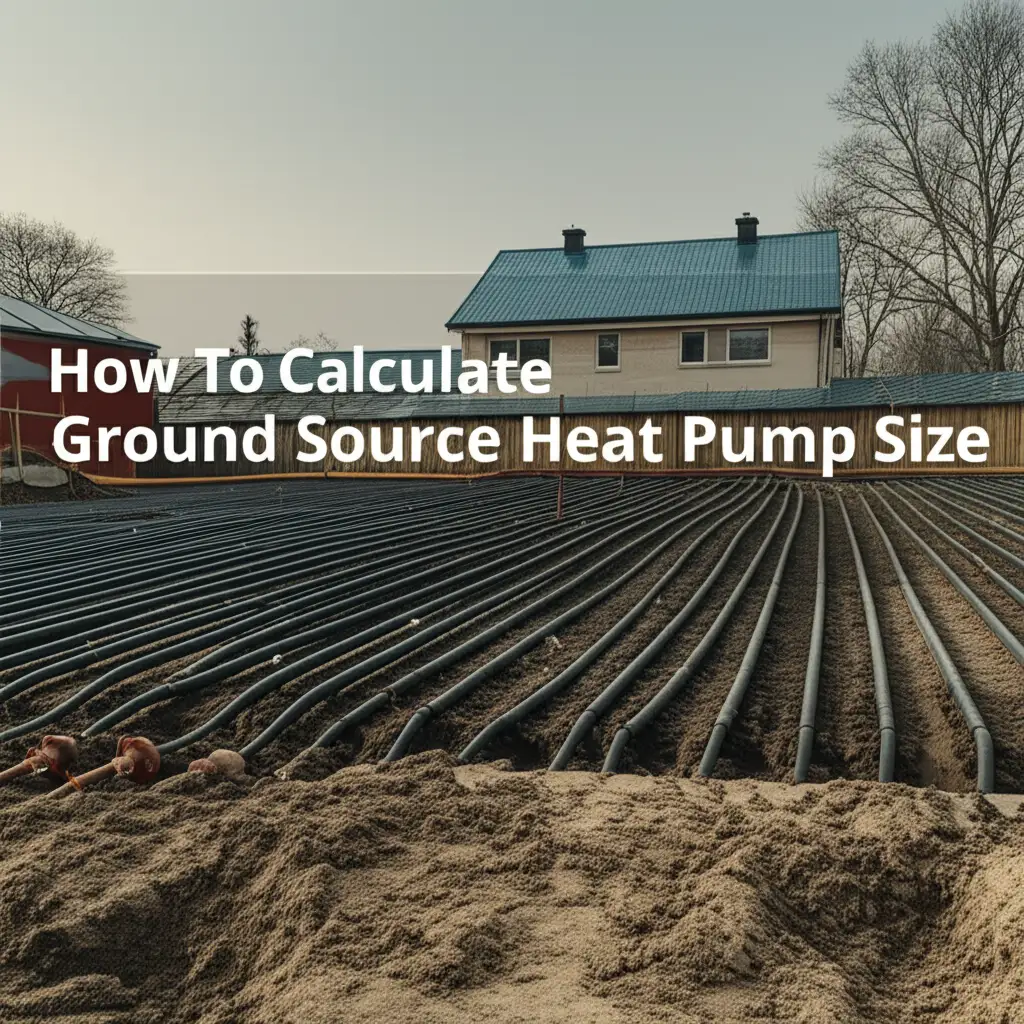· Katria Melrose · Home Comfort & HVAC · 23 min read
Is Your Heat Pump Supposed To Run Constantly
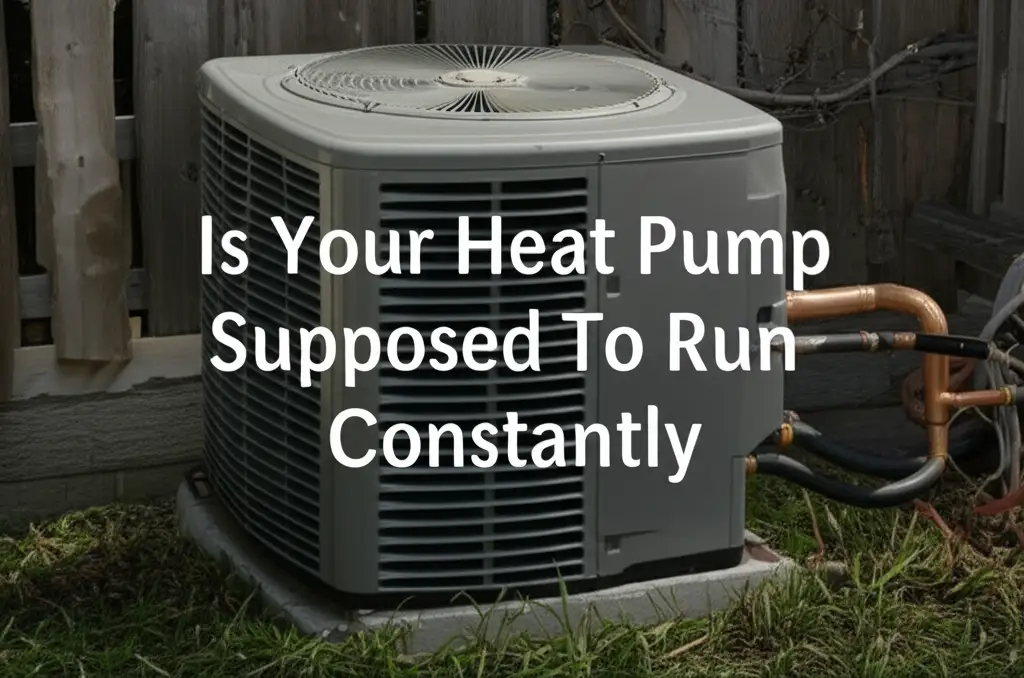
Understanding Why Your Heat Pump Runs Constantly
You just installed a new heat pump, or perhaps you’ve had one for years. Now you notice your heat pump running constantly. Is this normal behavior, or does it signal a problem? Many homeowners ask this question. I understand your concern about your energy bills and home comfort.
Heat pumps are fantastic for efficient heating and cooling. They work differently from traditional furnaces and air conditioners. This difference often leads to longer run times. Sometimes, a heat pump running constantly indicates an issue. Other times, it means the system performs exactly as designed. This article will help you understand your heat pump’s operation. We will explore why it might run continuously. We will also cover common issues and when to seek professional help. My goal is to give you clarity and peace of mind about your home’s HVAC system.
Takeaway
- Normal Behavior: Many modern, efficient heat pumps, especially variable-speed models, run for longer periods or almost continuously at lower speeds to maintain consistent temperatures and reduce energy spikes.
- External Factors: Extreme outdoor temperatures (hot or cold) make your heat pump work harder, leading to longer run times. Poor home insulation also contributes to this.
- Common Issues: A constantly running heat pump can signal problems like a dirty air filter, low refrigerant, iced coils, duct leaks, or an improperly sized unit.
- Thermostat Settings: Incorrect thermostat settings, like the fan “On” instead of “Auto,” or a very small temperature difference, can cause extended operation.
- Watch for Signs: Look for increased energy bills, reduced comfort, unusual noises, or ice on the outdoor unit. These signs often point to a problem needing attention.
- Maintenance Matters: Regular maintenance, including filter changes and professional tune-ups, is crucial for efficient heat pump operation and preventing constant running issues.
Is Your Heat Pump Supposed To Run Constantly?
No, your heat pump is not always “supposed to” run constantly in the way an old furnace might short-cycle. Modern heat pumps, especially variable-speed models, can run for very long periods at lower capacities. This maintains a more stable indoor temperature. However, truly non-stop, full-blast operation often signals an issue.
Normal Operating Cycles for Your Heat Pump
Heat pumps operate differently from traditional HVAC systems. This difference often leads to longer run cycles. Understanding these cycles helps you know if your heat pump performs normally. My heat pump also runs for extended periods, and I initially worried too.
Many modern heat pumps are variable-speed or multi-stage models. These units adjust their output based on the heating or cooling demand. They do not just turn on and off at full blast. Instead, they can run at a lower capacity for longer periods. This approach helps maintain a more consistent indoor temperature. It also uses less energy than constant starting and stopping. A traditional single-stage unit cycles on and off to reach the set temperature. A variable-speed heat pump aims to maintain it precisely. This results in fewer temperature swings in your home. It also creates a more comfortable environment. So, if your heat pump is running for hours at a time, it might just be doing its job efficiently. This is especially true if you have a newer, high-efficiency model. This longer, steady run time can be more energy-efficient overall.
Variable-Speed Heat Pump Operation
Variable-speed heat pumps are designed for continuous, low-level operation. They can vary their compressor speed. This allows them to match your home’s heating or cooling needs precisely. When the outdoor temperature is mild, the heat pump runs at a very low speed. It moves just enough heat to maintain your desired indoor temperature. As the temperature drops or rises significantly, the unit ramps up its speed. This provides more heating or cooling capacity. This continuous, quiet operation is often a sign of an efficient system. It creates a more even temperature throughout your home. This avoids the sudden blasts of air you might feel with older systems. The system might run almost non-stop in extreme conditions. This is part of its design to keep you comfortable.
Single-Stage Heat Pump Cycles
A single-stage heat pump operates differently. It runs at full capacity whenever it turns on. It cycles on until the thermostat reaches the set temperature. Then, it cycles off. This type of unit will not run continuously for very long under normal circumstances. If a single-stage heat pump runs non-stop, it usually indicates a problem. Its cycles should be shorter, perhaps 15-20 minutes, followed by a period of being off. Long, uninterrupted cycles on a single-stage unit suggest it struggles to reach the set temperature. This could point to issues like poor insulation or an undersized unit. It might also mean a component failure. Understanding your specific heat pump type is important. It helps you determine if its run time is typical or a cause for concern.
External Factors Influencing Heat Pump Runtime
Several external factors significantly impact how long your heat pump needs to run. These are often outside of your control, but understanding them helps you assess your system’s performance. When the weather changes drastically, I notice my heat pump works harder too.
Extreme Outdoor Temperatures
When outdoor temperatures become very cold or very hot, your heat pump must work much harder. In heating mode, the unit extracts heat from the outside air. As the outside temperature drops significantly, there is less heat available to extract. The heat pump has to run longer to gather enough heat to warm your home. It might even rely more on its auxiliary or “backup” heat source. This is especially true if temperatures fall below its efficient operating range. In cooling mode, the heat pump expels heat from your home to the outside. When outdoor temperatures soar, it is harder to shed this heat. The unit must run longer to move the heat out effectively. This prolonged operation in extreme weather is often normal. Your heat pump is simply trying to keep up with the demands of a challenging climate. This is especially true for an air source heat pump.
Home Insulation and Air Sealing
The quality of your home’s insulation and air sealing plays a critical role in heat pump runtime. A poorly insulated home loses heat rapidly in winter and gains heat quickly in summer. This forces your heat pump to run more frequently and for longer periods. Heat escapes through walls, ceilings, floors, and windows. Drafts enter through gaps around doors and windows. These air leaks make it difficult for your heat pump to maintain a stable indoor temperature. It constantly tries to replace lost heat or remove excess heat. This leads to continuous operation. Improving insulation and sealing air leaks can significantly reduce your heat pump’s runtime. It also lowers your energy bills. This is a worthwhile investment for long-term comfort and efficiency. It can also prevent your heat pump from becoming expensive to run.
Household Activity and Thermostat Setbacks
The way your family uses your home also affects heat pump run time. Opening and closing doors frequently lets conditioned air escape. Taking long, hot showers or cooking extensively adds moisture and heat to the air. These activities increase the workload on your heat pump. Furthermore, frequent thermostat adjustments or large temperature setbacks can make your heat pump run longer. If you set your thermostat very low in summer or very high in winter, the heat pump works harder to reach those extreme temperatures. Setting your thermostat back significantly when you leave, then cranking it up when you return, causes the system to run hard to catch up. A more consistent temperature setting can often lead to more stable, and potentially shorter, run times.
Thermostat Settings and Their Impact on Continuous Operation
Your thermostat is the brain of your heat pump system. Its settings directly influence how often and how long your heat pump runs. Sometimes, a simple setting adjustment can explain why your heat pump seems to be running non-stop. I always check my thermostat first if I notice unusual operation.
Fan Setting: “On” vs. “Auto”
One of the most common reasons for perceived continuous operation is the fan setting. Many thermostats have an “Auto” and an “On” setting for the fan. When the fan is set to “Auto,” it only runs when your heat pump’s compressor or heating elements are actively working. This means the fan cycles on and off with the heating or cooling calls. If you set the fan to “On,” the fan will run continuously, 24/7, regardless of whether the heat pump is actively heating or cooling. This circulates air constantly, which some people prefer for air quality or even temperatures. However, it can make it seem like your heat pump is running non-stop, even if the main heating/cooling components are cycling as normal. Always check this setting first if you notice constant airflow. For more details on this, you can read about when your heat pump fan runs.
Temperature Differential and Set Points
The temperature differential refers to the difference between your desired thermostat setting and the actual room temperature before the system activates. Most thermostats have a built-in differential. For example, if you set your thermostat to 70°F and the differential is 1°F, the heat pump might turn on when the temperature drops to 69°F. If you set your thermostat with a very narrow temperature range (e.g., trying to maintain exactly 72.0°F), your heat pump will cycle on and off more frequently. It will also run for longer durations to maintain that precise temperature. Modern heat pumps, particularly variable-speed ones, are designed to maintain a tighter temperature band. They do this by running for extended periods at a lower capacity. If you have a single-stage unit and it’s running constantly, ensure your set point isn’t too extreme for the outdoor conditions.
Smart Thermostat Features and Learning Modes
Smart thermostats offer advanced features that can influence run times. Many have “learning” modes that observe your habits. They can automatically adjust settings for energy savings. Features like “Away” modes, geofencing, or optimized startup can also change runtime patterns. For example, if your smart thermostat learns you like the house at 72°F by 5 PM, it might start the heat pump earlier. This ensures the temperature is reached by your arrival. This can mean longer initial run times. Some smart thermostats also have options for “fan circulation” or “even comfort” modes. These modes override the standard “Auto” fan setting. They might run the fan periodically even without a heating/cooling call. Understand your smart thermostat’s settings thoroughly. This helps prevent misinterpretations of normal operation.
Common Issues Causing Your Heat Pump to Run Constantly
While some constant running is normal, prolonged, inefficient operation usually signals an underlying problem. These issues prevent your heat pump from effectively heating or cooling your home. This forces it to work harder and longer. I have encountered several of these problems myself. For broader insights into these issues, you can check out why your heat pump might run all the time.
Dirty Air Filters
A dirty air filter is one of the most common culprits for a constantly running heat pump. The air filter traps dust, dirt, pet dander, and other particles. It prevents them from entering your heat pump’s indoor coil and fan. When the filter becomes clogged, it restricts airflow across the indoor coil. This significantly reduces your heat pump’s efficiency. The unit then struggles to move enough conditioned air into your home. It works harder and longer to try and reach the thermostat’s set temperature. This prolonged effort means higher energy bills and less effective heating or cooling. I always recommend checking and changing your air filter monthly, or at least every 90 days. This simple maintenance step can save you money and keep your heat pump running efficiently. It’s often the first thing I check.
Low Refrigerant Levels
Refrigerant is the substance that absorbs and releases heat within your heat pump system. It is essential for the heat transfer process. If your heat pump has low refrigerant levels, it cannot effectively move heat. This is almost always due to a leak in the system. When refrigerant levels are low, the heat pump struggles to extract or dissipate heat. It runs continuously trying to achieve the desired temperature. You might notice your home isn’t getting as warm or cool as it should. Low refrigerant can also lead to freezing of the outdoor coil in heating mode. This issue requires professional attention. A certified HVAC technician needs to locate and repair the leak. They then recharge the system with the correct amount of refrigerant. Do not try to add refrigerant yourself. This is dangerous and illegal without proper certification.
Iced or Dirty Coils
Both the indoor (evaporator) and outdoor (condenser) coils need to be clean and free of ice to work properly. A dirty indoor coil, often a result of a neglected air filter, blocks airflow. This reduces the coil’s ability to absorb or release heat. If the outdoor coil becomes covered in dirt, debris, or even ice, its heat exchange capability is severely hampered. In heating mode, the outdoor coil can sometimes ice up. This is usually due to very cold temperatures, high humidity, or a malfunctioning defrost cycle. A heat pump’s defrost cycle removes ice from the outdoor coil. If this cycle fails, the ice buildup will worsen, leading to constant running and poor performance. You might see a thick layer of ice on the outdoor unit. Dirty coils force the system to run longer to compensate for its reduced efficiency. Regular professional cleaning helps prevent this.
Undersized or Oversized Unit
An improperly sized heat pump will struggle to maintain comfortable temperatures. An undersized unit cannot meet your home’s heating or cooling demands. It will run almost continuously trying to catch up, especially during extreme weather. It simply lacks the capacity to condition the entire space adequately. This constant effort leads to higher energy bills and shorter lifespan for the unit. Conversely, an oversized unit also creates problems. While it might seem like more power is better, an oversized unit often “short cycles.” It heats or cools the space too quickly. It then turns off before it can effectively dehumidify the air. While it won’t run constantly, short cycling is inefficient and puts more wear on the components. Proper sizing is critical during installation. It considers factors like square footage, insulation, windows, and climate.
Ductwork Leaks and Blockages
Your ductwork distributes conditioned air throughout your home. Leaks in the ducts can cause significant energy loss. If there are holes or gaps in your ductwork, conditioned air escapes into unconditioned spaces like attics, crawl spaces, or wall cavities. This means less heated or cooled air actually reaches your living areas. Your heat pump then has to run longer to try and compensate for this lost air. Blockages within the ducts, caused by debris, collapsed sections, or closed dampers, also restrict airflow. This prevents the heat pump from properly distributing air, forcing it to run longer to reach the thermostat setting. Regular inspections and sealing of ductwork can drastically improve your heat pump’s efficiency and prevent continuous operation.
When Constant Running is a Problem: Signs to Watch For
While modern heat pumps often run for longer periods, there are clear signs that constant operation is actually a problem. These indicators suggest inefficiency, malfunction, or a system struggling to keep up. Pay attention to these warnings. I learned these signs the hard way once.
Unexplained Increase in Energy Bills
The most immediate and noticeable sign of a problem is a sudden or significant jump in your energy bills. If your heat pump is running constantly due to inefficiency or a malfunction, it will consume more electricity. Even if it’s running longer due to extreme weather, a drastic increase suggests it’s not performing optimally. Compare your current bills to previous months or the same period last year. If your usage has spiked without a change in weather patterns or thermostat settings, your constantly running heat pump is likely costing you too much money. This is a primary indicator that something is wrong with the system itself.
Reduced Heating or Cooling Performance
If your heat pump is running continuously but your home is not reaching the set temperature, or feels less comfortable than usual, this is a red flag. Perhaps the air coming from your vents isn’t as warm in winter or as cool in summer. Or maybe certain rooms feel drafty or stuffy. The system is working hard but failing to deliver the desired results. This indicates that the unit is struggling to transfer heat effectively. It might be due to low refrigerant, dirty coils, or a failing compressor. A heat pump that constantly runs yet fails to keep you comfortable is not functioning correctly. It needs professional assessment.
Unusual Noises or Odors
Your heat pump should generally operate quietly. Any new or unusual noises coming from the indoor or outdoor unit are a cause for concern. These can include:
- Loud banging or clanking: Often indicates a loose or failing part, like a fan blade or compressor issue.
- Hissing or bubbling: Can point to a refrigerant leak.
- Grinding or squealing: Might mean a motor bearing is failing.
- Clicking: Could be a relay problem, especially if repetitive and not tied to startup/shutdown.
Similarly, strange odors like a burning smell (electrical issue), a musty smell (mold in ducts or coils), or a chemical smell (refrigerant leak) are serious warning signs. Turn off the unit immediately and call a professional if you detect such odors.
Visible Ice Formation on Outdoor Unit
A small amount of frost on the outdoor coil in cold weather is normal. Heat pumps have a defrost cycle to manage this. However, if you see a thick layer of ice building up on the outdoor unit, especially during normal winter temperatures, this is a problem. Significant ice accumulation can prevent the unit from properly exchanging heat. This forces it to run continuously in an attempt to compensate. Common causes for excessive ice include:
- Malfunctioning defrost cycle: The system isn’t melting the ice properly.
- Low refrigerant: Causes the coil to run colder than it should.
- Restricted airflow: Could be due to dirty coils or blockages around the unit.
Ice buildup reduces efficiency and can damage the compressor. It needs immediate attention from a technician.
Troubleshooting and Maintenance Steps for Continuous Heat Pump Operation
When your heat pump is running constantly, there are several troubleshooting steps you can take yourself before calling a professional. Regular maintenance is also key to preventing many of these issues. Taking these steps can save you time and money. I always perform these checks first. Learning how to run an air source heat pump efficiently also helps.
Simple DIY Checks You Can Perform
Before you panic, try these quick checks:
- Check the Air Filter: This is the easiest and most common fix. Locate your indoor air filter (usually near the indoor unit or in a return air vent). If it’s dirty or clogged, replace it with a clean one. A clean filter ensures proper airflow. This helps your heat pump run more efficiently and stops it from working overtime.
- Verify Thermostat Settings: Ensure your thermostat is set to “Auto” for the fan. If it’s on “On,” the fan runs continuously even when the heating or cooling isn’t active. Also, check that the set temperature is reasonable for the outdoor conditions. Avoid extreme temperature changes if possible.
- Inspect Outdoor Unit for Obstructions: Make sure the outdoor unit (condenser) is clear of debris. Leaves, grass clippings, or snow can block airflow. Clear away anything within at least two feet around the unit. Ensure vents are not blocked.
- Check for Closed Registers or Blocked Vents: Walk through your home and ensure all supply and return registers are open and unobstructed by furniture or drapes. Restricted airflow in any room can make the system work harder.
These simple steps can often resolve the issue or help you gather information for a technician.
Importance of Regular Professional Maintenance
While DIY checks are helpful, regular professional maintenance is crucial. Scheduling an annual or bi-annual tune-up with a certified HVAC technician offers many benefits. A professional can:
- Clean Coils Thoroughly: They use specialized tools to clean indoor and outdoor coils. This removes grime that DIY methods cannot reach. Clean coils optimize heat transfer.
- Check Refrigerant Levels: Technicians can accurately measure refrigerant levels. They can identify and repair any leaks. Correct refrigerant levels are vital for efficiency.
- Inspect Electrical Components: They check wiring, capacitors, and contactors. This prevents electrical failures and ensures safe operation.
- Lubricate Moving Parts: Proper lubrication reduces friction and wear on motors and bearings. This extends the lifespan of components.
- Test Defrost Cycle: In winter, they ensure the defrost cycle works correctly. This prevents ice buildup on the outdoor coil.
- Assess Overall System Performance: They can identify issues like an undersized unit or ductwork problems. They provide recommendations for improvement.
Regular maintenance helps catch small issues before they become major, costly repairs. It also ensures your heat pump runs as efficiently as possible. This prevents unnecessary constant operation.
Maximizing Heat Pump Efficiency and Longevity
Beyond troubleshooting specific issues, there are general practices you can adopt to ensure your heat pump operates optimally. These strategies help extend its lifespan and maintain its efficiency, preventing it from running constantly when it shouldn’t. I find these tips make a big difference in my own home.
Understanding Your Heat Pump’s Unique Characteristics
Each heat pump model has its own operating characteristics. Variable-speed heat pumps are designed to run for longer periods at lower capacities. This maintains steady temperatures. Single-stage units cycle on and off more frequently. Know what type of heat pump you have. This helps you understand its normal behavior. Consult your owner’s manual or ask your HVAC technician. This knowledge empowers you to differentiate normal operation from a true problem. This understanding is key to being a proactive homeowner. It prevents unnecessary worry about a heat pump running constantly.
Smart Thermostat Usage for Optimal Performance
A smart thermostat can be a powerful tool for efficiency when used correctly. Program it to suit your family’s schedule. Use setback temperatures when you are away or asleep. However, avoid large temperature swings. For example, do not drop the temperature by more than 5-7 degrees. Gradually adjust your thermostat by a degree or two at a time. This allows the heat pump to ease into the new setting. Drastic changes force the system to work harder. Utilize “auto” fan settings. This saves energy by only running the fan when conditioning is needed. Explore other features your smart thermostat offers, like energy reports. These reports can show you usage patterns. This helps you identify periods of higher energy consumption.
Home Improvement for Better Insulation and Air Sealing
Your home’s envelope significantly impacts your heat pump’s workload. Even the most efficient heat pump struggles in a leaky, poorly insulated home. Consider making improvements such as:
- Adding Attic Insulation: This is often the most cost-effective way to improve energy efficiency.
- Sealing Air Leaks: Use caulk and weatherstripping around windows, doors, and utility penetrations. Check for gaps around pipes, wires, and ductwork.
- Upgrading Windows: Energy-efficient windows reduce heat transfer.
- Insulating Ductwork: Especially ducts running through unconditioned spaces like attics or crawl spaces. This prevents energy loss before air reaches your rooms.
These home improvements reduce the amount of heat your heat pump needs to add or remove. This allows it to run less often and more efficiently. It directly impacts whether your heat pump is running constantly or enjoying healthy cycles.
Regular Cleaning and Filter Replacement Schedule
Maintaining a regular cleaning schedule is crucial.
- Monthly Filter Checks: Check your air filter monthly. Replace it every 1-3 months. Dirty filters restrict airflow, forcing your heat pump to work harder.
- Outdoor Unit Cleaning: Regularly clear away leaves, grass clippings, and other debris from around the outdoor unit. This ensures proper airflow for the condenser coil.
- Coil Cleaning: While filters help, indoor and outdoor coils can still accumulate dirt. Professional cleaning every year or two ensures optimal heat transfer.
These simple, consistent actions directly impact your heat pump’s ability to operate efficiently. They prevent the system from needing to run continuously to compensate for diminished performance.
FAQ Section
Is it normal for a heat pump to run for hours?
Yes, especially for modern variable-speed heat pumps. These units are designed to run for extended periods at lower capacities. This maintains a consistent temperature and is often more energy-efficient. If your home feels comfortable and energy bills are stable, continuous running can be normal operation.
Why is my heat pump fan always running?
Your heat pump fan might run constantly if the thermostat fan setting is “On” instead of “Auto.” In “On” mode, the fan continuously circulates air regardless of heating or cooling calls. If it’s set to “Auto” and still runs, there could be a control board issue or a stuck relay.
Does a heat pump save money if it runs constantly?
If a variable-speed heat pump runs constantly at a low capacity, it often saves money due to its high efficiency and ability to avoid energy spikes from frequent starts. However, if a single-stage unit runs constantly or a variable-speed unit runs at high capacity non-stop due to a fault, it will likely cost more money.
How long should a heat pump cycle last?
A single-stage heat pump typically cycles for 15-20 minutes, followed by an off period. Variable-speed heat pumps might run for hours continuously at lower speeds. The ideal cycle length depends on the unit type, outdoor temperature, and your home’s insulation.
What temperature should I set my heat pump to?
For optimal efficiency and comfort, set your heat pump to a comfortable, consistent temperature. Experts often recommend around 68-70°F in winter and 75-78°F in summer. Avoid extreme temperature changes, as this forces the system to work harder and run longer.
When should I call a professional for a constantly running heat pump?
Call a professional if your heat pump runs constantly and you notice: significantly higher energy bills, reduced heating/cooling performance, unusual noises or odors, excessive ice buildup on the outdoor unit, or if DIY troubleshooting doesn’t resolve the issue.
Conclusion
Understanding why your heat pump runs constantly is key to maintaining a comfortable and energy-efficient home. While modern heat pumps, especially variable-speed models, are designed for longer run times, truly non-stop operation can signal an underlying problem. We explored various reasons, from normal behavior in extreme weather to issues like dirty filters, low refrigerant, or improper sizing.
My experience shows that recognizing the difference between normal extended cycles and problematic continuous running saves homeowners worry and money. Always start by checking basic things like your air filter and thermostat settings. Regular maintenance is your best defense against unexpected issues. If you notice a significant increase in energy bills, reduced comfort, or unusual noises, do not hesitate to contact a qualified HVAC professional. They can diagnose the issue accurately and perform necessary repairs. Investing in your heat pump’s health ensures it continues to provide efficient, reliable heating and cooling for years to come.
- heat pump
- HVAC system
- continuous operation
- energy efficiency
- heat pump troubleshooting
- home heating
- home cooling


